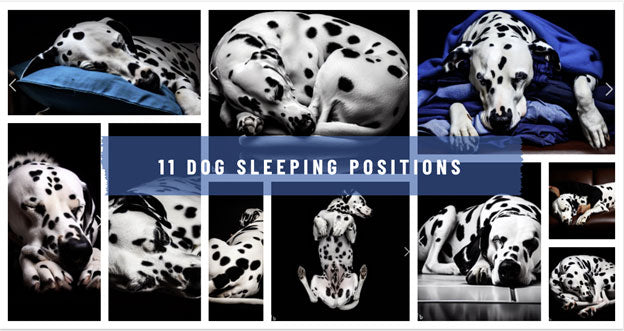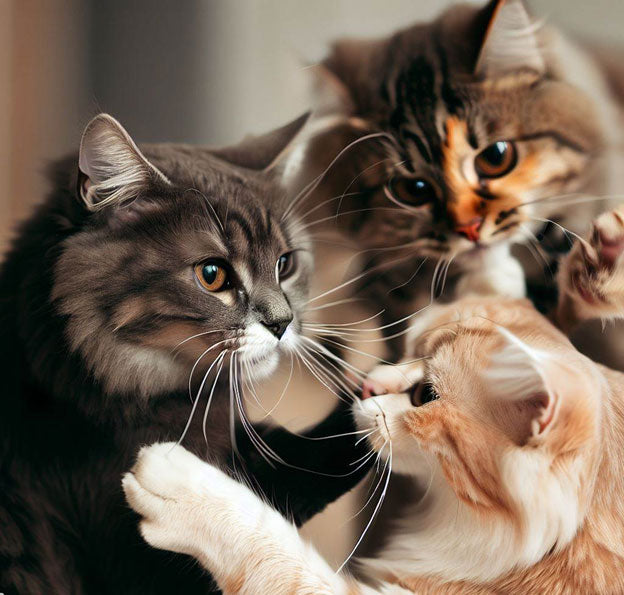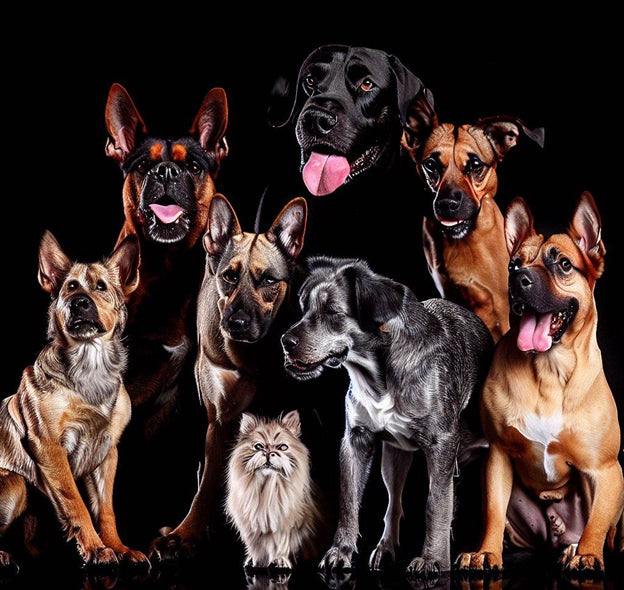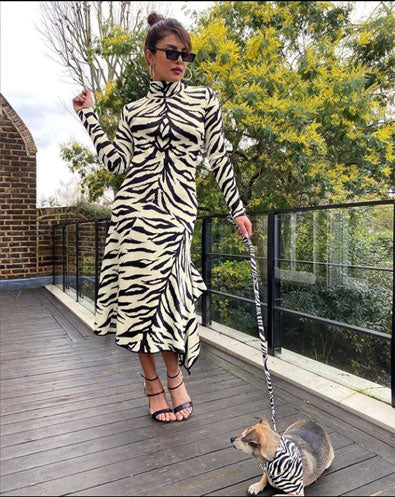
Military Dogs Breeds: What Dogs do the Military Use?
Disclaimer: Some of the links in our blog posts are affiliate links. This means we may earn a small commission if you make a purchase through them which helps support our blog, at no extra cost to you.
Army dogs play a vital role in military service, providing unmatched loyalty, skills, and support to their human counterparts. Whether detecting explosives, tracking down enemies, or comforting soldiers, these remarkable animals demonstrate their value and devotion to protecting and serving their countries. Some of the best military dog breeds are as follows.

German Shepherd

German Shepherds were initially developed by a German army officer specifically for military use, which explains their enduring popularity as a military breed. During World War I, the German army employed trained German Shepherds as sentries, messengers, and ammo carriers. In World War II, other nations, including the U.S., also enlisted German Shepherds for military service, and the breed has been serving the armed forces globally ever since. German Shepherds' intelligence, loyalty, athleticism, and protective nature make them exceptional military dogs. They possess all the necessary qualities, making them the preferred choice for armies worldwide. These dogs are robust, agile, loyal, easily trainable, and capable of remaining composed in hostile environments.
|
Height and weight |
22-26 inches, 50-90 pounds |
|
Life Expectancy |
12-14 years |
|
Temperament |
Confident, courageous, and smart |
|
Colors |
Bi-color, Black, Black and cream, black and tan, black and red, black and silver, blue, gray, liver, sable, white |
Belgian Malinois

The Belgian Malinois breed has a history of serving in the military, starting from their involvement in World War I as messengers and search dogs to locate wounded soldiers on the battlefield. Today, they are used as versatile working dogs in various military roles. Like German Shepherds, Belgian Malinois possess high intelligence, athleticism, and an intense and determined nature, making them well-suited for military applications. Their smaller size than German Shepherds also makes them preferred by elite units like Navy SEALs, as they are more easily deployed through parachuting. Notably, a Belgian Malinois named Cairo played a vital role in the SEAL team's successful mission to track Osama Bin Laden in 2011. Despite their slightly smaller stature, Belgian Malinois share many attributes with their German Shepherd counterparts, making them highly capable in military operations, especially in scenarios that require compactness or maneuverability.
|
Height and weight |
22-26 inches, 40-80 pounds |
|
Life Expectancy |
14-16 years |
|
Temperament |
Confident, smart, and hard-working |
|
Colors |
Fawn, fawn sable, mahogany, red, red sable |
Doberman

Doberman Pinschers, known for their protective nature and intelligence, played a significant role as military working dogs during both World Wars. They served various functions, such as sentries, messengers, and detection dogs, and were instrumental in locating and rescuing wounded soldiers. In World War II, the U.S. Marines had their own group of Dobermans, affectionately called "Devil Dogs," who demonstrated exceptional bravery. A memorial dedicated to these courageous Dobermans stands on the island of Guam, where 25 of them were laid to rest after sacrificing their lives. While Dobermans are less commonly employed by the U.S. military today, they continue to serve in other countries like India. The Doberman breed remains favored by the U.S. army, earning the nickname 'the Devil Dog of the Marines' due to their remarkable service during World War II. Their strength and athleticism make them well-suited for roles as patrol dogs.
|
Height and weight |
24-28 inches, 60-100 pounds |
|
Life Expectancy |
10-12 years |
|
Temperament |
Loyal, fearless, and alert |
|
Colors |
Black and rust, blue and rust, fawn and rust, red and rust |
Husky

Initially bred for sled pulling, Huskies played a vital role in the U.S. military during World War II. Following the attack on Pearl Harbor in 1941, Huskies and Alaskan Malamutes were the only two breeds actively involved in the military dog program. Siberian Huskies were deployed as search and rescue dogs in Arctic regions, capable of providing transportation in severe weather conditions when motorized vehicles were impractical. Although no longer utilized by the U.S. military, Huskies have recently been reintroduced by the Russian army for transportation purposes in regions where weather and terrain render vehicles unreliable. Regarding military operations in cold climates, Huskies are an invaluable asset. During World War II, the U.S. army relied on this breed to rescue airmen who crashed in the icy wilderness of Greenland. With their strength, loyalty, and ability to pull heavily laden sleds for miles in snowy conditions without tiring, Huskies have proven their worth in demanding military scenarios.
|
Height and weight |
20-23.5 inches, 35-60 pounds |
|
Life Expectancy |
12-14 years |
|
Temperament |
Loyal, mischievous, and outgoing |
|
Colors |
Agouti and white, black, black and white, black with tan and white, brown and white, gray and white, red and white, sable and white, white |
Alaskan Malamute

Like their Siberian Husky counterparts, Alaskan Malamutes played a crucial role as sled dogs in the U.S. military during World War II. However, their contributions extended beyond traditional sled pulling. Alaskan Malamutes were among the pioneering military dogs trained to parachute, showcasing their versatility and adaptability.
These remarkable dogs were utilized in search and rescue missions, fearlessly leaping into rugged and unforgiving terrains. Their primary objective was transporting rescue teams, enabling them to reach downed aircraft and their crews swiftly. Alaskan Malamutes proved invaluable assets in these high-stakes operations, their strength and endurance allowing them to navigate complex landscapes and assist in locating and retrieving personnel in need.
The U.S. military showcased the breed's exceptional abilities and dedication to service by employing Alaskan Malamutes as parachuting search and rescue dogs. Their willingness to leap into challenging environments and aid in retrieving humans and equipment demonstrated their bravery and loyalty.
|
Height and weight |
23-25 inches, 75-85 pounds |
|
Life Expectancy |
10-14 years |
|
Temperament |
Affectionate, loyal, and playful |
|
Colors |
Agouti and white, black and white, blue and white, gray and white, red and white, sable and white, seal and white, silver and white, white |
Labrador Retriever

Labrador Retrievers, initially bred for their exceptional noses as hunters, have found a valuable role as military working dogs. Their unmatched sense of smell makes them indispensable as specialized search dogs, aiding in detecting explosives alongside their human handlers. Labradors are renowned for their amiability, intelligence, and high trainability, making them ideal candidates for combat stress control roles. Their wagging tails and friendly demeanor provide a much-needed source of comfort and relief to soldiers during long and intense deployments. Even amidst chaotic situations, Labrador Retrievers remain calm and composed, utilizing their remarkable sense of smell to locate explosives effectively. Their temperament and olfactory prowess make them the perfect canine soldiers for critical tasks.
|
Height and weight |
21.5-24.5 inches, 55-80 pounds |
|
Life Expectancy |
10-12 years |
|
Temperament |
Friendly, active, and outgoing |
|
Colors |
Black, chocolate, yellow |
Boxer

Boxers played a significant role in the German military during World Wars, serving as loyal pack and messenger dogs. While some Boxers continue to serve as military working dogs, they have gained widespread popularity as companion dogs worldwide. Their contributions to the military during World War II increased their global presence, as many soldiers brought Boxers home with them after the war. Known for their strength, agility, and loyalty, Boxers were highly valued during World War II, fulfilling various duties such as messengers, scouts, and patrol dogs. Even today, they are still enlisted in the armed forces due to the exceptional qualities that make them valuable assets in military operations.
|
Height and weight |
21.5-25 inches, 50-80 pounds |
|
Life Expectancy |
10-12 years |
|
Temperament |
Bright, fun-loving, and active |
|
Colors |
Brindle, fawn |
Rottweiler

Rottweilers, known for their imposing appearance, debuted as army dogs during World War I. These intelligent and loyal canines were guards, alerting troops to enemy movements. While their role as military working dogs has recently diminished, Rottweilers left a mark as messenger dogs during both World Wars. They earned a reputation for their courage in delivering crucial communications even in hazardous conditions. While technological advancements have reduced their need for this role, their unwavering dedication to their handlers makes them a sought-after addition to military forces.
|
Height and weight |
22-27 inches, 80-135 pounds |
|
Life Expectancy |
9-10 years |
|
Temperament |
Loyal, loving, and confident guardian |
|
Colors |
Black and mahogany, black and rust, black and tan |
Terriers

Airedale Terriers, known as the "king of terriers," proved their worth as dependable and obedient dogs in the British Army during World War I. With their natural suspicion of strangers and an exceptional sense of smell, Airedales excelled in patrol duties and search and rescue missions. These intelligent and determined dogs served as sentries and were trained to carry messages across the battlefield. Additionally, they played a vital role in assisting the Red Cross by sniffing out wounded soldiers and transporting medical supplies. Although their military utilization has decreased over time, the heroism displayed by Airedale Terriers in World War I garnered recognition from soldiers on both sides of the conflict.
On the other hand, the Black Russian Terrier was specifically bred to be a military working dog by the Soviet army after World War II. They created a large, protective dog capable of functioning in Russia's extreme climate through a careful combination of 17 different army dog breeds, including the Giant Schnauzer, Rottweiler, and Airedale Terrier. Black Russian Terriers are utilized for patrol duties, mine detection, and search and rescue operations. Their purposeful breeding and unique characteristics make them valuable in military operations.
|
Height and weight |
23 inches, 50-70 pounds |
|
Life Expectancy |
11-14 years |
|
Temperament |
Friendly, clever, and courageous |
|
Colors |
Black and tan, grizzle and tan |
Yorkshire Terrier

Not all military dogs are large and muscular. Despite its small size, the Yorkshire Terrier's fearless nature enables them to perform tasks that bigger dogs may struggle with. In World War II, for instance, Yorkshire Terriers were utilized to pull telegraph wires through narrow tunnels, facilitating communication in challenging environments.
|
Height and weight |
18 inches, 25-27 pounds |
|
Life Expectancy |
13-15 years |
|
Temperament |
Bold, dashing, and tenderhearted |
|
Colors |
Red, red wheaten, wheaten |
Dutch Shepherd
Similar to German and Belgian breeds, Dutch Shepherds are widely recognized as valued military working dogs. Originally bred as sheepherders in the Netherlands, Dutch Shepherds were recruited by the German army during World War II due to their exceptional operational abilities. Dutch Shepherds, alongside the breeds mentioned above, form a significant portion of the working dog population in the U.S. military. With their intelligence and trainability, Dutch Shepherds are a favorable choice for military service.

|
Height and weight |
21.5-24.5 inches, 42-75 pounds |
|
Life Expectancy |
11-14 years |
|
Temperament |
Intelligent, lively, and athletic |
|
Colors |
Gold brindle, silver brindle |
Giant Schnauzer

Initially bred for herding cattle, Giant Schnauzers demonstrated their versatility as a sentry and tracking dogs in the German army during both World Wars. In the United States, they were employed by the Air Force during World War II and later in the 1980s. However, it was determined that their temperament was not as suitable for military work compared to other breeds. However, the Department of Defense recently reintroduced the breed for specialized roles. Notably, a Giant Schnauzer named Brock was selected and trained for odor detection and patrol. Brock, showcasing the military dog breed's capabilities, proudly served on a presidential detection detail in Germany in 2017, exemplifying the breed's potential in military service.
|
Height and weight |
23.5-27.5, 55-85 pounds |
|
Life Expectancy |
12-15 years |
|
Temperament |
Loyal, alert, and trainable |
|
Colors |
Black, pepper and salt |
Mastiff
Mastiffs are one of the earliest breeds historically associated with military dogs. Dating back at least 2,500 years, Mastiffs were utilized by various ancient civilizations, including the Persians, Greeks, and Romans, who took these colossal guard dogs to war. In those times, Mastiffs served a dual purpose: guarding and actively engaging the enemy. However, modern-day Mastiffs have undergone breeding that has diminished their war dog tendencies. Today, they are more commonly found in living rooms, where their drooling tendencies overshadow their roles as military working dogs.

|
Height and weight |
27.5-30 inches and up, 120-230 pounds |
|
Life Expectancy |
6-10 years |
|
Temperament |
Courageous, dignified, and good-natured |
|
Colors |
Apricot, brindle, and fawn |
Pet Portraits In Military Uniform That Will Command Your Attention!

Retired army dogs are treated with care and respect once their active duty concludes. Famous army dogs like Sergeant Stubby and Nemo exemplify the bravery and dedication displayed by these remarkable animals in the line of duty.
Dogs have played an invaluable role in the military as dedicated and loyal partners, earning their rightful place as "man's best friend" on the battlefield. From specialized training to their unwavering dedication, dogs in the army have showcased remarkable abilities, exemplifying the bond between humans and animals. Regardless of breed, Military canines have proved their worth as canine soldiers, demonstrating exceptional detection, tracking, and protection skills. Their contributions have saved countless lives, both military personnel and civilians alike. As we recognize the remarkable abilities and unwavering loyalty of army dogs, we acknowledge their immense impact in shaping military operations and fostering a deeper appreciation for the human-animal bond.
If you're looking for gifts to delight the pet lover who is in the army, look no further than our collection of dogs in military uniform! These treasures will surely bring a big grin to their face. Whether it's a custom pet portrait, a personalized pet mug, or a tail-waggingly adorable pet-themed accessory, we've got just the gift to make their heart skip a beat.
Popular Blog
7 Unique Products That Every Dog Owner Will Love
Let’s be honest, our dogs run the house. They make us laugh, steal our socks,...
50 Funny Dog Birthday Puns for a Tail-Wagging Good Time!
Here is a delightful collection of 50 dog birthday puns guaranteed to bring s...
Homemade Dog Toys Your Pooch Will Love: Top 10 DIY Delights
Pet toys, especially safe dog toys, can be expensive and don’t last too long....
Canine Companions Worldwide: Modern Treatment & Taxes for Dog Owners
The intricate relationship between humans and dogs is a testament to a profou...











